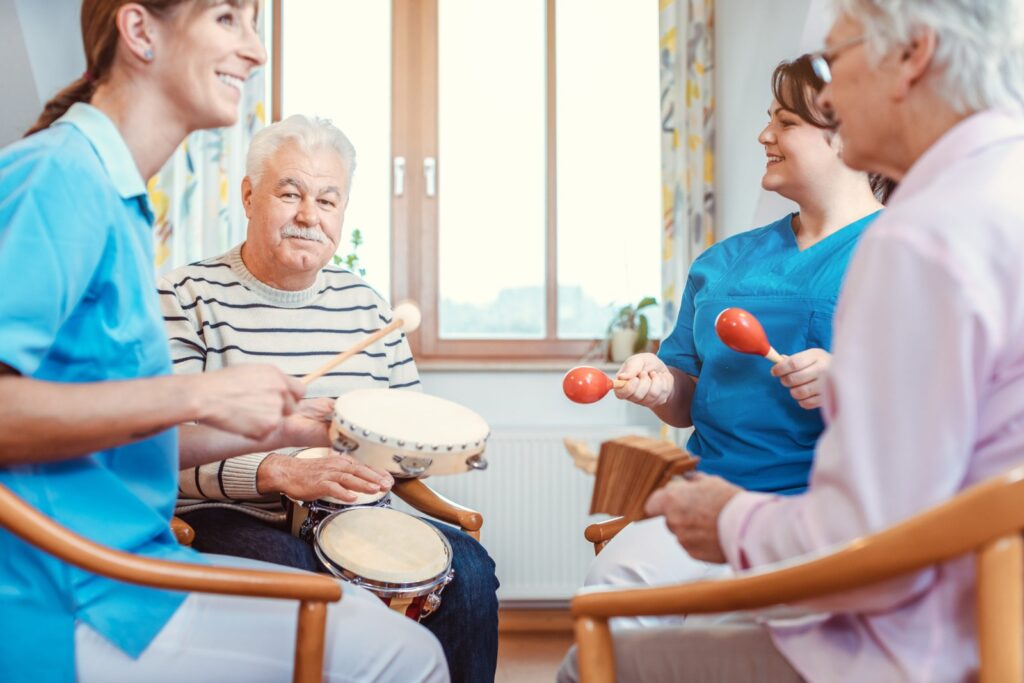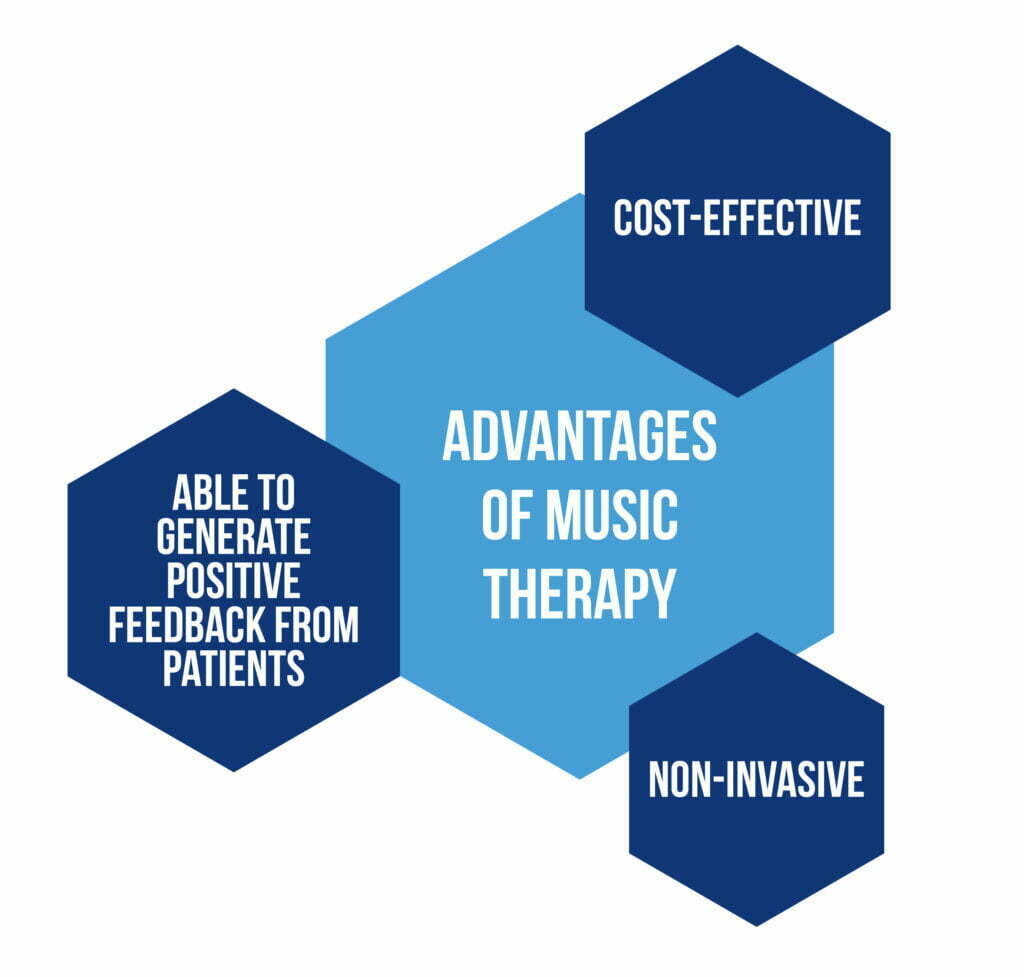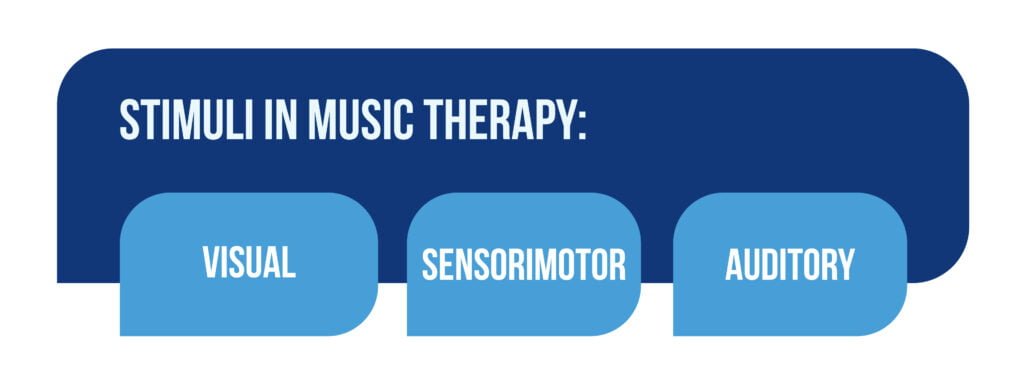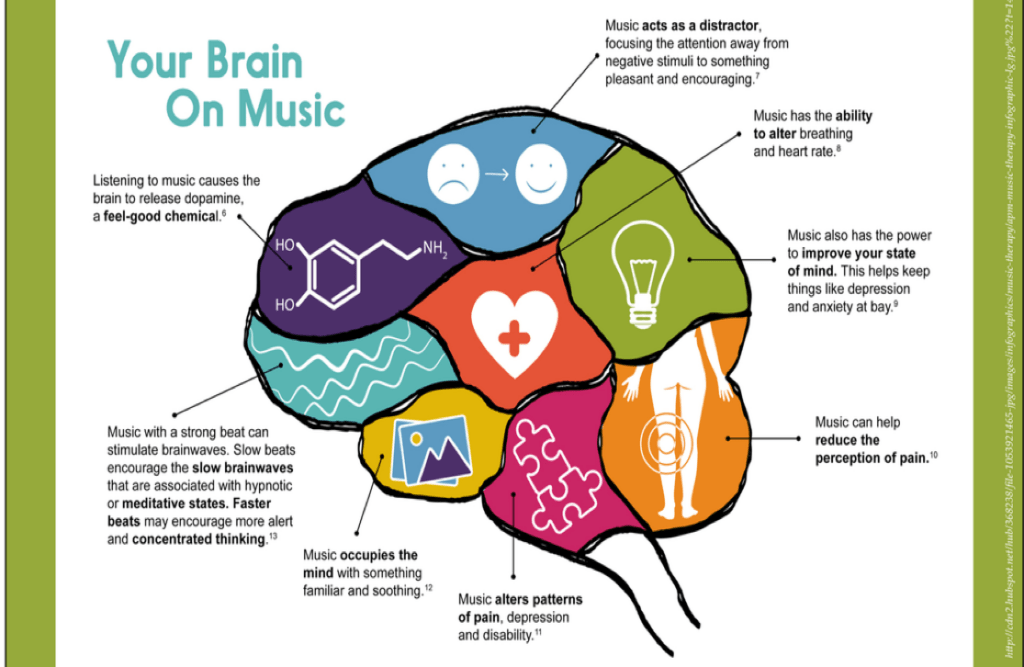How can music improve stroke recovery?

Authors: Victor Dabala, Oana Vanta
Keywords: music, neurorehabilitation, stroke, hand functionality. paretic hand, cognitive decline, aphasia, dysphagia
How can music improve stroke recovery?
Music therapies can be considered part of the alternative therapies regarding cerebrovascular diseases and their impact. Several post-stroke deficits, like language, motor, or cognitive deficits, can be successfully targeted using therapies that involve music.
Music therapy is an option that implies several advantages over other rehabilitation techniques, as those showcased in Figure 1 [1].
Moreover, it is a useful strategy for those suffering from a wide array of affections, addressing physical, emotional, cognitive, and social needs [2].

To learn more about neurorehabilitation in cerebrovascular diseases, visit:
- Adequately Targeted Brain Stimulation in Post-Stroke Motor Rehabilitation
- Constraint-Induced Movement Therapy improves short-term motor function of early stroke patients
- SENSe: Assessing neurorehabilitation’s impact on the somatosensory function in stroke patients
What is the action model of music-supported therapies?
Music-supported therapies (MST) or music-based therapies (MBS) have evolved to a more practical approach in recent times. The main point behind MST and its efficiency is allowing the patient to follow specific instructions generated while playing several types of instruments (e.g., piano, guitar, drums). The validity of the advantages generated by music-supported therapy is encouraged by previous results, as improved outcomes in several functionalities can be identified after almost an entire month of an MST program [3].
A synergic effect that music has with movement can be described as MST using continuous stimuli delivered to activate the central nervous system (CNS) – to generate new neuronal connections at the highest rate possible. Moreover, it facilitates an increase in the efficiency of neuro-muscular junctions. From a different point of view, it was demonstrated that functional magnetic resonance imaging (fMRI) could detect changes in the vascular supply of the hemisphere where the lesion is located while stimulation from MST is applied. The increased blood flow facilitates neuroplasticity and recovery of the affected tissue [3–5].
The sensory input created by the generated sound and tactile stimuli can facilitate the functional recovery of the hemisphere damaged during the ischemic event [3–5].
A different approach to music therapy is characterized by the process of multiple categories of different stimuli, as presented in Figure 2.

The last level of integration is represented by the premotor cortex (PMC) of the frontal lobe, therefore involving the top-down output model (which translates the information to the peripheral levels of control after it is processed at the cortex level) [3–5]. The effects of music on different brain areas are presented in Figure 3.

Is MST useful in the rehabilitation of the paretic hand?
The principles of recovering the loss of hand functionality for stroke survivors are currently part of an ongoing process. The proportion of patients that manage to recover their paretic hand can vary over time, with more than two-thirds of survivors not being able to fully regain their lost abilities. Even after long periods of time have passed (e.g., four or more years after the ischemic event), hand deficits continue to remain an important problem for a part of the stroke population. Therefore, the need for new modalities that can improve the functional capacity of these patients is considered a necessity. Conventional techniques, as well as novel therapies, should be researched to obtain valuable results [4].
Some of the most commonly used conventional therapies are:
Several improvements can be encountered while applying MBT, including those presented in Figure 4.

Music-supported therapies’ positive effects (Figure 5) were observed during the acute and rehabilitation period for all patients. Compared with traditional methods, the primary abilities that were elevated after MST was the calculation of the trajectory for grasping an object and the timing of a hand-generated action [4, 5].

What can be said about language deficits and music-based therapies?
Language impairment in speech production or understanding (aphasia) is a major consequence of brain ischemia. The improvement of aphasia through speech therapy differs for each patient, causing a burden for the patient due to the duration of treatment sessions and increased effort. Without other effective methods for functional recovery, music-based therapies can be a solution because of the increased likelihood of adherence [3, 8, 9].
As the brain areas responsible for speech share similar functions when it comes to singing, exposing the patient to music can cause a shift in the plasticity of the damaged regions of language. The most relevant example of MBT applied in aphasia is Melodic intonation therapy (MIT), instructing stroke survivors to use their unaffected ability to sing to reconstruct the neural speech pathway. The method is simple and can be easily applied by each patient in the comfort of their home.
The domains of language that are commonly a target of MIT are naming and repetition [3, 8, 9].
While the MIT can be effective in both the subacute and chronic phase of stroke recovery, proper regulation of clinical parameters should be proposed, as other language domains (e.g., fluency or spontaneity of speech) could be defined as targets for music-based therapies [9].
Is dysphagia a target for music therapy?
While swallowing impairment is usually found in older patients, dysphagia remains the most prevalent complication in stroke populations and one of the most serious. As dysphagia cannot be considered a hallmark of chronic stroke patients (affecting almost 16% of this category), improper cough or salivation can lead to fear of alimentation or asphyxiation, increasing both the morbidity and mortality of the cerebrovascular disease. Individual MBT was demonstrated to elevate patients’ ability to breathe and swallow at a normal rate and functionality, improving the phonation time. The benefit of MBT in swallowing problems is correlated with speech deficits, as oral motor control increases parameters like [3, 10]:
- articulation
- intelligibility
- prosody.
While the data that refers to dysphagia and music therapies are relatively underdeveloped, the results can be considered satisfactory, encouraging the research in the domain and shifting the attention to more complex types of scientific models (e.g., Randomized Controlled Trials -RCTs) [10].
Can cognitive impairment be relieved using MBT?
From affected memory function to changes in learning patterns, cognitive dysfunction after stroke is considered a domain without a clear rehabilitation plan, as any treatment form is yet to be proven entirely effective [11].
The main advantage of music-based therapies is the range of possibilities that can work in cognitively impaired patients – both playing a musical instrument or listening to one can generate a positive change in neuroplasticity because of the unaffected pathways that permit stroke patients to perceive music as well as before the ischemic event. A different effect regarding the type of music listened to can generate a different elevation. For example, meditative music has increased concentration and improved attention [3, 11].
MBT should be applied as early as possible to strengthen the overall effect. Vocal music training can also be considered a solution, as it involves specific areas necessary for regulating emotional processing [11].
Conclusion
As a non-invasive and easy-to-apply therapy, music-supported therapy has been widely used in medical practice in the last period of time. Because of the extensive stimulation of the central nervous system and the increase of blood flow in the damaged hemisphere, MST can be considered a valuable instrument in improving the functional aspects of generated impairments in stroke populations, as well as facilitating a shift back to a standard quality of life [1,12].
Future studies should focus on the role of MST in different disorders or complications of a stroke, including spasticity or gait disturbances, therefore crystallizing the modality as a highly efficient instrument in the field of neurorehabilitation.
References
- Galińska E. Music therapy in neurological rehabilitation settings. Psychiatr Pol. 2015;49(4):835-46. English, Polish. doi: 10.12740/PP/25557.
- https://qsstudy.com/music-therapy/
- Xu C, He Z, Shen Z, Huang F. Potential Benefits of Music Therapy on Stroke Rehabilitation. Oxid Med Cell Longev. 2022;2022:9386095. doi: 10.1155/2022/9386095.
- Raglio A, Zaliani A, Baiardi P, Bossi D et al. Active music therapy approach for stroke patients in the post-acute rehabilitation. Neurol Sci. 2017;38(5):893-897. doi: 10.1007/s10072-017-2827-7.
- Huang WH, Dou ZL, Jin HM, Cui Y et al. The Effectiveness of Music Therapy on Hand Function in Patients With Stroke: A Systematic Review of Randomized Controlled Trials. Front Neurol. 2021;12:641023. doi: 10.3389/fneur.2021.641023.
- http://www.therabeat.com/news-and-events/2019/8/8/mental-health-amp-community-music-therapy
- https://www.brightonmusictherapy.co.uk/music-therapy-stroke/
- Q Liu, W Li, Y Yin et al. The effect of music therapy on language recovery in patients with aphasia after stroke: a systematic review and meta-analysis. Neurological Sciences, vol. 43, no. 2, pp. 863–872, 2022. DOI: 10.1007/s10072-021-05743-9
- Liu Q, Li W, Yin Y, Zhao Z et al. The effect of music therapy on language recovery in patients with aphasia after stroke: a systematic review and meta-analysis. Neurol Sci. 2022;43(2):863-872. doi: 10.1007/s10072-021-05743-9.
- Soo Ji Kim. Music Therapy Protocol Development to Enhance Swallowing Training for Stroke Patients with Dysphagia, Journal of Music Therapy, Volume 47, Issue 2, Summer 2010, Pages 102–119, https://doi.org/10.1093/jmt/47.2.102
- T. Särkämö, “Music for the ageing brain: cognitive, emotional, social, and neural benefits of musical leisure activities in stroke and dementia,” Dementia (London), vol. 17, no. 6, pp. 670–685, 2018. doi: 10.1155/2022/9386095
- Särkämö T, Soto D. Music listening after stroke: beneficial effects and potential neural mechanisms. Ann N Y Acad Sci. 2012;1252:266-81. doi: 10.1111/j.1749-6632.2011.06405.x. DOI: 10.1111/j.1749-6632.2011.06405.x









